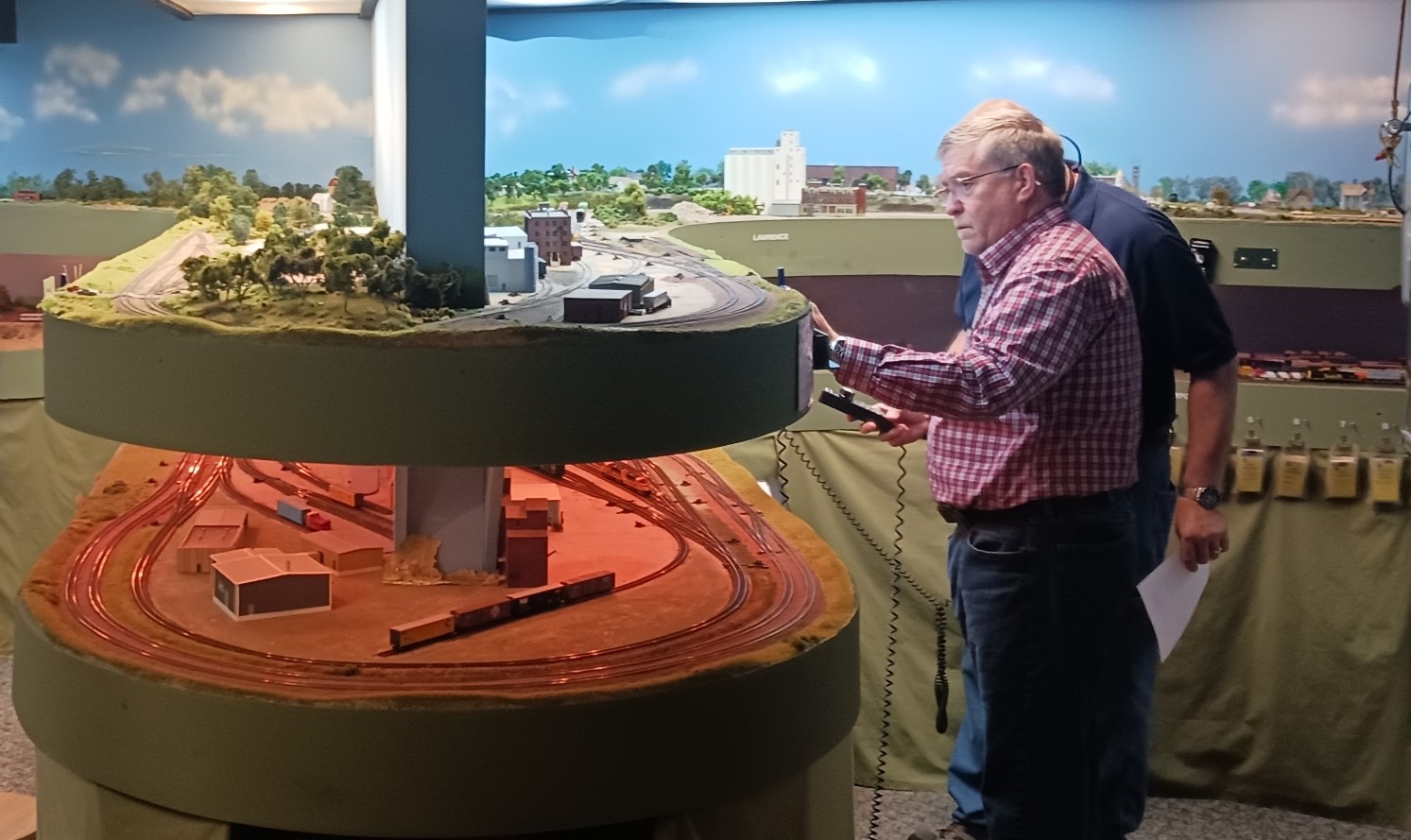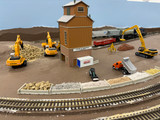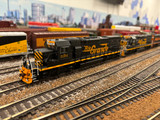Railroad Realms: Navigating the Tracks of Intermediate Model Railroading Part 1: Advanced Layout Planning Techniques
Welcome, fellow model railroaders, to the inaugural post of "Railroad Realms: Navigating the Tracks of Intermediate Model Railroading." In this installment, we delve into the captivating realm of advanced layout planning techniques, a crucial phase for those seeking to elevate their miniature worlds. Join Midwest Model Railroad as we unravel the secrets behind intricate track plans and delve into the art of optimizing space to maximize the potential of your layout.
Intricate Track Plans: Crafting the Perfect Railroad Tapestry
The foundation of any captivating model railroad lies in its track plan. Moving beyond the basics, we explore the intricacies of designing more advanced layouts. Learn how to incorporate crossovers, sidings, and industry spurs strategically to enhance both aesthetic appeal and operational realism. We'll discuss methods for overcoming challenges like tight spaces or irregular room shapes, ensuring that your tracks flow seamlessly through the landscape.
Optimizing Space: Making Every Inch Count
Space is a valuable commodity in the world of model railroading, and mastering the art of optimization is essential. We'll share practical tips and tricks on utilizing every inch of available space efficiently. From clever track arrangements to creative scenery placement, discover how to make your layout visually stunning while ensuring smooth operation. Uncover the secrets of creating a layout that feels expansive, even in limited dimensions.
Creating a visually appealing and operationally efficient model railroad within limited space requires ingenuity and strategic planning. Here are some tips and tricks to help you make the most of every precious inch:
1. Compact Track Arrangements:
- Utilize Spirals and Helixes: Implementing spirals or helixes allows your trains to climb or descend vertically, saving valuable horizontal space. This is particularly beneficial for those with multi-level layouts or limited floor space.
- Crossovers and Siding Placement: Strategically place crossovers and sidings to maximize the use of your tracks. This not only enhances the visual interest of your layout but also provides opportunities for realistic operations.
2. Space-Saving Scenery Techniques:
- Vertical Scenery Elements: Incorporate vertical scenery elements like elevated landscapes, hills, or buildings. This adds depth without consuming extensive floor space.
- Backdrop Illusions: Create visually stunning backdrops that simulate distant landscapes, adding a sense of expansiveness without sacrificing room for your trains to roam.
3. Compact Storage Solutions:
- Foldable or Sliding Shelves: If space is truly at a premium, consider incorporating foldable or sliding shelves for parts of your layout. This allows you to reclaim space when the layout is not in use.
- Hidden Storage Tracks: Design hidden storage tracks beneath the visible portions of your layout. This provides additional space for storing rolling stock without cluttering the mainline.
4. Streamlined Scenic Elements:
- Selective Compression: Embrace selective compression by recreating key scenic elements in a condensed form. This technique maintains the essence of realism while saving space.
- Narrow Structures and Roads: Design structures and roads to be narrower than their real-world counterparts. This creates the illusion of distance and conserves space for your trains to navigate.
5. Flexible Track Planning Software:
- Explore Virtual Layouts: Take advantage of track planning software to experiment with various layouts virtually. This allows you to visualize the spatial dynamics and make informed decisions before committing to physical construction.
- Optimize Radius and Turnouts: Use software to optimize the radius of curves and the placement of turnouts. This ensures smooth operations while maximizing the use of available space.
Implementing these tips and tricks will empower you to optimize every inch of your model railroad layout efficiently. By combining creativity with strategic planning, you can create a captivating miniature world that feels expansive and immersive, even in confined spaces. Stay tuned for more insights in the "Railroad Realms" series as we continue to unravel the intricacies of intermediate model railroading. All aboard for a space-efficient and visually stunning journey!

Exploring Layout Styles: Point-to-Point, Loop, and Multi-Level Marvels
Dive into the diverse world of layout styles, each offering its unique charm and challenges. Whether you're intrigued by the simplicity of point-to-point layouts, the continuous motion of loop layouts, or the complexity of multi-level designs, we've got you covered. Explore the pros and cons of each style and gain insights into choosing the one that aligns with your vision and preferences.
Point-to-Point Layouts:
Pros:
- Realistic Operations: Point-to-point layouts often mirror the operations of real railroads, offering a sense of realism and purpose to train movements.
- Space Efficiency: Well-suited for smaller spaces, point-to-point layouts can be more compact while still providing engaging and dynamic operations.
- Focused Detailing: With a defined start and end, modelers can concentrate on detailing specific scenes and structures along the route.
Cons:
- Limited Continuous Operation: Trains run between two fixed points, limiting continuous running. This may be less appealing for those who enjoy the constant motion of trains.
- Staging Challenges: Designing effective staging yards at each end can be challenging, requiring careful planning to seamlessly integrate them into the layout.
Loop Layouts:
Pros:
- Continuous Operation: Loop layouts offer continuous running, allowing modelers to enjoy the rhythmic motion of trains without interruptions.
- Simplicity: Easier for beginners to design and operate, making loop layouts an excellent choice for those new to model railroading.
- Flexibility: Loop layouts can be easily expanded or modified, providing flexibility for future changes.
Cons:
- Reduced Realism: The repetitive nature of loops may lack the realistic operational feel of point-to-point layouts.
- Space Consumption: Requires more space compared to point-to-point layouts of similar complexity due to the need for continuous loops.
Multi-Level Marvels:
Pros:
- Visual Interest: Multi-level layouts add visual interest and complexity, creating a dynamic and immersive environment.
- Increased Track Length: Multiple levels allow for longer mainline runs and more intricate track plans.
- Diverse Scenery Opportunities: Each level can represent different geographic regions, providing opportunities for varied scenery and detailing.
Cons:
- Complex Construction: Building and maintaining multi-level layouts can be more challenging and time-consuming.
- Space Requirements: Requires a larger space to accommodate multiple levels, making it less suitable for those with limited room.
- Staging Considerations: Planning effective staging yards and hidden tracks for multi-level layouts requires careful attention to avoid operational challenges.
Choosing between point-to-point, loop, or multi-level layouts ultimately depends on individual preferences, available space, and desired levels of realism and operational complexity. Each layout style offers unique advantages and challenges, contributing to the diverse and exciting world of model railroading.
In this journey through advanced layout planning, we aim to empower you with the knowledge and inspiration to transform your model railroad into a dynamic and visually stunning masterpiece. Stay tuned for future posts in the "Railroad Realms" series, where we'll continue to unravel the intricacies of intermediate model railroading, one track at a time. All aboard for a thrilling exploration of the next level in your model railroading adventure!
Photo Credit: Photo 1 taken by employee Jason Stiles of the Central Iowa Railroad Club HO layout where he is a member. Photo 2 taken by employee Jason Stiles at John Acheson's N scale layout. You might notice a couple of our other employees in the photos as well ;-)
Recent Posts
-
All Aboard the Wisdom Express: Life Lessons from Model Railroading
Embarking on the journey of model railroading opens the door to a world where imagination meets prec
-
Capturing History in Miniature: The Art of Prototype Modeling in the Model Railroad World
Prototype modeling in the model railroad world involves creating miniature replicas of real-life tra
-
Unveiling the Imaginative World of Fictional Railroads: Where Creativity Meets the Rails
Model railroading has long been a hobby rooted in historical accuracy and meticulous attention to de




